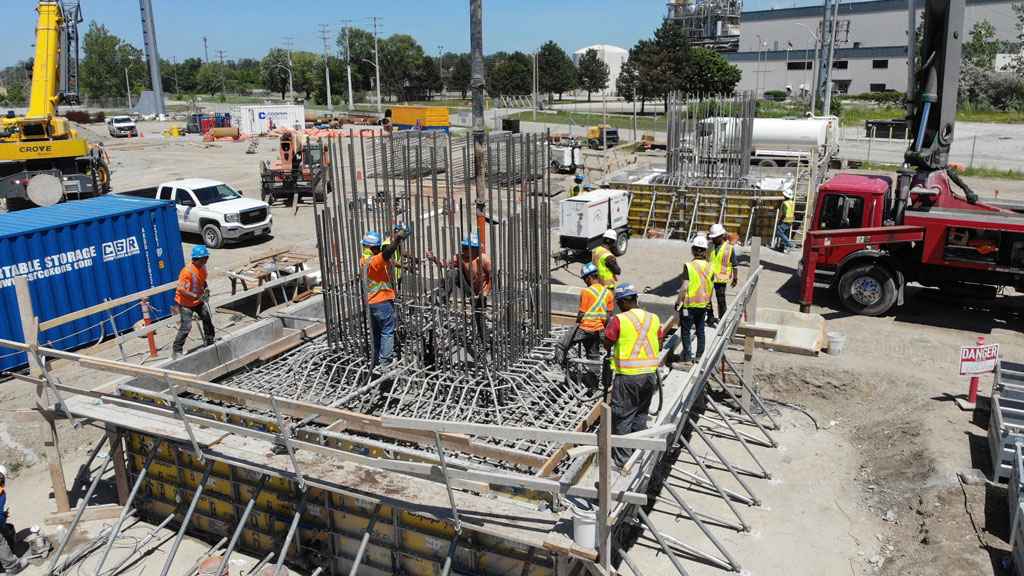A recent report on federal infrastructure spending by a House of Commons all-party committee strikes a balance between meeting the hard infrastructure needs of municipalities and building to achieve social policy goals, say two construction and engineering executives who contributed presentations.
The report of the Standing Committee on Transport, Infrastructure and Communities, chaired by Liberal Peter Schiefke, offers 18 recommendations advising policy-makers aiming to achieve social and environmental goals. Titled Targeted Infrastructure Investments to Influence Social, Economic and Enviroinment Outcomes, the report was released in June.
Among the witnesses who gave evidence at the committee sessions in the spring of 2021 were Sandra Skivsky, chair of the National Trade Contractors Coalition of Canada (NTCCC), and John Gamble, president and CEO of the Association of Consulting Engineering Companies-Canada (ACEC).
“On balance, I think it’s a good report,” said Gamble. “It certainly gives us something to sink our teeth into when we’re engaging in dialogue with public policy-makers both at the department level and at the political level.
“It does put a little bit of wind under our wings to accomplish some of the things in the report.”
Gamble’s presentation stressed the need to continue efforts to undertake an evidence-based national infrastructure assessment through which to base all infrastructure investment decisions, and to provide flexibility to achieve diverse goals.
He also argued that targeted infrastructure investments based on asset management planning provide the most value to communities and the best return to the taxpayer.
Both he and Skivsky said that, in addition to flexibility, long-term plans are essential.
The first recommendation reflects those targets. It was recommended the “Government of Canada work to make its infrastructure programs less prescriptive about the types of projects that are eligible and provide local governments with more flexibility and long-term predictability.”
There was also a call for the strengthening of municipal asset-management plans; to include a focus on climate resilience and emissions reductions in drafting the National Infrastructure Assessment; and to enhance collaboration and funding on the National Trade Corridors initiative.
The standing committee decided to study targeted infrastructure investment as the government’s $180-billion Investing in Canada plan, launched in 2016, reached its halfway mark.
Gamble noted the list of recommendations represented a “laundry list” of issues but they were not necessarily incongruous.
“Obviously, some of the recommendations are a greater interest to us than others,” said Gamble. “It says a lot of the things we had hoped it would say.”
Gamble recented tweeted it was a “good day at the office” because the report highlighted a statement from his testimony: “Agility and flexibility are very key to successful infrastructure. It’s entirely appropriate for the government to have prescriptive programs that are trying to achieve certain things, but they’re not going to solve all the problems for all the municipalities.”
The engineer explained it was notable that the lobbying of such groups as the ACEC, the NTCCC and the Canadian Construction Association over the last decade had raised the profile of the need for stable infrastructure funding.
“I do believe that we have moved the yardsticks in terms of government looking more long-term in infrastructure and recognizing that infrastructure is an investment to be leveraged rather than an expense to be minimized,” said Gamble.
With a sound national infrastructure assessment in place that is built upon empirical data and the input of subject matter experts, said Gamble, all types of infrastructure spending such as environmental infrastructure, one-off megaprojects and the types of hard infrastructure found in municipal asset management plans could be judged and delivered through that sophisticated lens.
Skivsky stressed the need for long-term spending to enable workforce planning to ensure there is capacity to get work done. The long-term plan and mid-course corrections should be undertaken in close collaboration with important construction stakeholders, she said.
“Through that group, you would have access to more regional areas, because obviously, the market is different in different parts of the country at any given time,” she said, adding, “The idea of more flexible funding and being less prescriptive is definitely there.”
All those principles ought to be enshrined in the national infrastructure assessment said Skivsky.
In her testimony, she asserted that long-term planning would enable better outcomes for rural and remote projects, with teams able to take the time to train up local workers and leave a lasting skills legacy rather than contractors bringing resources in and “taking everything back out.”



Recent Comments
comments for this post are closed